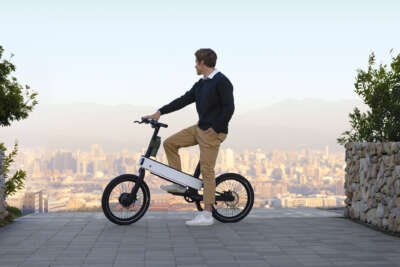Rise of the Bots

- Drones take stock of the inventory
- SoftBank Robotics, Pensa Systems

Robots have been advancing into retail. Here is an update on some of the latest trends.
Robots have taken over huge parts of industrial working processes and are driving workers in Amazon warehouses to a better level of productivity. But brick-and-mortar outlets still have fewer metallic friends wandering around than we might have thought by 2020. Though we’re still short of a fully automated workforce, there are nonetheless quite a few examples of retail applications around the world that are pointing at more to come.
Unsurprisingly, repetitive, data heavy tasks like inventory management are done much more efficiently by robots. Texan start-up Pensa Systems, profiled before in Radar, added to its seed funds with a further $10 million at the end of last year, to continue spreading its fleet of drones through the back rooms of stores nationwide.
Pensa’s system automatically tracks in-store inventory using small drones with advanced computer vision and AI. Their “eyes” record the data in the cloud, analysed over time to predict stock fluctuations before they happen. All this is to make up a shortfall the company says is more than $1 trillion worldwide, resulting from poorly recorded stock and bad inventory planning.
Another solution for this costly issue is SmartSight, a tall and narrow ground-moving robot that also scans shelves, but in this case reports inventory issues to its human colleagues. SmartSight is from Chicago-based company Zebra Technologies, who claim its creation can keep inventory at 95% product availability, while freeing up 65 hours of labour a week for human workers to do tasks more suited to their temperament.
Robots as servers have been around to some degree for a while, notably Pepper, from Japanese telecom giant Softbank. Designed to interact in an amusing, friendly and informative way with customers, it is intended to bring digital and physical retail experiences together, while collecting behavioural data at the same time. Last year it was rolled out in HSBC branches across Canada and the US, for example, and was credited with boosting customer engagement. Just before the Covid-19 lockdown, more than 1,000 high school students in Boston, San Francisco and Vancouver were learning how to code applications for Pepper, with the robot visiting classrooms to give inspiration. For this purpose SoftBank launched Tethys, a visual programming tool to help students learn to code.
Considering the extent of potential applications using “open-source” robots, the possibilities are dizzying. “What you are starting to see in robotics today is very much like the early days of personal computers or mobile phones,” says Brad Bogolea, CEO of Simbe Robotics. His company produces Tally, another retail robot, and received $26 million series A funding last autumn, as well as a deal with Softbank robotics to produce 1,000 robots over two years. “We envision a future where robotics will permeate the entire supply chain, allowing physical retail to achieve ‘digital parity’ with online retail,” adds Bogolea. Tally roams around stores checking inventory and ensuring items are properly tagged and priced.
Meanwhile in online retail the appearance of Amazon drones flying through our airspace inches closer to reality. Early in September the mega company was granted approval from the US Federal Aviation Administration for operation of its Prime Air delivery fleet. The specific approval clause allows the company to carry products on small drones “beyond the visual line of sight” of a human operator. Amazon says it will now begin testing customer deliveries. Other firms that have this approval are UPS and Wing, the latter owned by Google’s parent company Alphabet.















